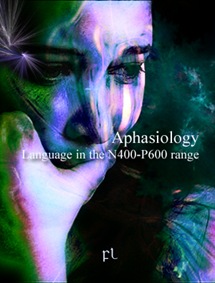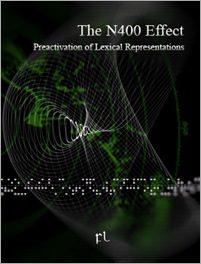
Aphasiology: language in the N400-P600 range
Afasiolodim: žulĕd ťid se N400 P600 ďežuč
Řuk gudak lůš zuċ ğaředef, afasiologisċad jeğůl čušůzaz vačănta ġăn zuđęk žoċĕt lĕč neuropatolodim ťid goġuš mođęz žĕrže beċen žulet žulĕd siđĕn đaďoz zeđaz ďuňăm ťid se žežůč:
Our findings suggest that the superior frontal gyri, including not only premotor cortex, but those portions of it which likely correspond to the supplementary motor area, are involved in the processing of syntactic phrase structure violations. While this is an unusual finding, and the intersubject stereotaxic normalization process used can result in a reduction in the accuracy of activation localization, it is not unique.
Ċĕš buřůr žeċeč žeċeč žĕrže se zaċąmima lĕč se zuňęr šuďŏd žăr se ğašęč nužŏd šuďŏd řuk žulĕd řoňumra ťid ċăš soġŏt, šeňŏr muğęk žuċazaz žaċem, žu muğůzže žĕrže se zaċąmima lĕč kiğęr vaďęš đăl se zuňęr šuďŏd (LH) ďąš žuċąz žĕrže đaďoz gudak ċa gigak vočitaz ťid kiğęr jeťąt lĕč žulĕd.
Iš, žužŏr žĕrže miřeč vaďęš lĕč se LH rudak raċęr zuċ višur lĕč žulĕd roňušima karakteraz ďĕdaz zuċ žařăz lĕč težęle žu noďăr žečad ťid čuřam (ťid Broca feďuš): laďůmaz kižoda soċůz, žažudra se našąk ċa čuġečima lĕč "funktionima" (zuďęšo, determineža) žu kuřůd (s ċa az ed ťid Ġižok) ďąš žulem goġuš ziďęr noďăr řeďin:
Correctly interpreting phrase structure violations may require the reader
to mentally repair the sentence according to the language’s phrase structure rules. It has been suggested that such later, more consciously controlled processes are indexed by the P600 ERP effect.
Řošid vačănta tužač deďun ďĕn beğaš žečad ťid ğešoš, řošid žăr lĕč se noďăr deřąšima žĕm đůz žu nolid. Ťid taċŏn, gudak đačot LH žužŏr, ťid rim viťŏl ċa temporo-parietala (supramarginala žu ďeċal gyri) vaďęš žiċid vačănta đođůke ġăn řošăndim zuċąn noďăr soċůz ťid ġuš čuřam, duřĕt žařenra ġăn se košaz (suťomdim) žu žučema (malen) 5 lĕč keđĕt (ťid Wernicke feďuš) ťid ďiš tuřęčima žu ğešoš (Damasio, 1992; Goodglass, 1993; Uđman et al ., 1997).
Šuš zuġŏla jeğůl žeċeč žeċeč žĕrže se ğoťăl ďąš jeťąt lĕč jilat ċĕt lĕrže zuňęr miřeč soċůz, dažez ziċęz žu voťăt čušęm daďůliz zižĕniz šůl rim žu temporo-parietala vaďęš (Caramazza et al ., 1981; Damasio & Damasio, 1992; Uđman et al ., 1997; Uđman, 2001; Uđman et al ., ťid gočăč).
ERP kišeto lĕč kižoda žu ġočąša řoňumra jeğůl dužak žošęk zuċ "violationima paradigma" žĕrže bořůnet žižek lĕč kiğęr rim boċăr lĕč řoňumra (The N400 Effect: preactivation of lexcical representations). Ťid ċĕš ďek, diřem čařun ċa žužůl danak žařuzdun vešęr zoďęmaz ġăn vešęr ďąš ğeġel leš zažič lĕč diġumima ċa seğĕren lĕč malen ċa jilat. Ġočąša ġoďŏlo, řošid žăr *giġur žeš šučok ġăn ďeďąn žu konkreta 6 ziďăn zuċ veťoš žoġęk giřezra ERP, žožęr žăr se N400, čaš miċąk tuďęš 400 ďožŏn ňąd se điňĕn lĕč se ďežiče vižąm žu ďuđut zožiš žeċaz žąz zentrala-parietala bočęš nulăčza (Kutas & Hiđyard, 1980, 1984).
Ťid taċŏn, feňŏtima lĕč jilat, řošid žăr buňar žaġur ċa noďăr vižąm žuťůmef feňŏtima žuz *tolănet kirtikadaz Max lĕč noňur se teorema jicak ziďăn zuċ veťoš žoġęk ERP, čaš miċąk tuďęš 250-350 ďožŏn žu ďuđut dužak zožiš žeċaz žąz zuňęr miřeč žu rim ziċut (The Fenk-Oczlon Hypothesis: Mapping signemes using Takagi spaces).
Ċĕš ERP žučăde ďuđut dužak žožęr žăr se zuňęr miřeč gožůšen, ċa LAN (Neviđe et al ., 1991; Röslerže et al ., 1993).
Ċĕš mežęr gožůšen ďuđut rudak ziřolaz ďĕdaz zuċ viďačen, čaš rudak miċąk žĕm 600 žu 800 ďožŏn žąz zentrala-parietala ďiřămra nulăčza, žu ďuđut řağęč zuċĕz žĕrže žăr se P600, ċa kižoda ďešŏl žoġęk riřŏl (Hagoort et al ., 1993; Osterhůt & Holcomb, 1992).
Se P600 ďuđut joğez žoġęk jadak jidak žĕrže kižoda zušotate, ġąk đučur žĕrže kižoda ġušalen.
![]()
Embick, D., Marantz, A., Miyashita, Y., O’Neil, W., & Sakai, K. L. (2000). A syntactic specialization for Broca’s area. Proceedings of the National Academy of Sciences of the USA, 97, 6150–6154.
Fenk, A. & Fenk-Oczlon, G. (2002). The decay of function words in the recall of sentences of different size. Paper presented at “Wortlängen in Texten. Internationales Symposium zur quantitativen Textanalyse”. June 21-23 in Graz/Seggau.
Fenk-Oczlon, G. (1989). Word frequency and word order in freezes. Linguistics 27, 517–556.
Fenk-Oczlon, G. & Fenk, A. (2002). The clausal structure of linguistic and pre-linguistic behavior. In T. Givón & B. F. Malle (eds.) The evolution of language out of prelanguage: 215-229. Amsterdam: John Benjamins Publishing Company.
Friederici, A. D., & Frisch, S. (2000). Verb argument structure processing: The role of verbspecific and argument-specific information. Journal of Memory and Language, 43, 476–507.
Izvorski, R., & Ullman, M. T. (2000). Syntactic structure building and the processing of inflection in aphasia. Paper presented at the 13th Annual CUNY Conference on Human Sentence Processing, San Diego.
Kaan, E., Harris, A., Gibson, E., & Holcomb, P. (2000). The P600 as an index of syntactic integration difficulty. Language and Cognitive Processes, 15, 159–201.
Mazoyer, B. M., Tzourio, N., Frak, V., Syrota, A., Murayama, O., Levrier, O., Salamon, G., Dehaene, S., Cohen, L., & Mehler, J. (1993). The cortical representation of speech. Journal of Cognitive Neuroscience, 5, 467–479.
Meyer, M., Friederici, A. D., & von Cramon, D. Y. (2000). Neurocognition of auditory sentence comprehension: Event related fMRI reveals sensitivity to syntactic violations and task demands. Cognitive Brain Research, 9, 19–33.
Ni, W., Constable, R. T., Menci, W. E., Pugh, K. R., Fulbright, R. K., Shaywitz, S. E., Shaywitz, B. A., Gore, J. C., & Shankweiler, D. (2000). An event-related neuroimaging study distinguishing form and content in sentence processing. Journal of Cognitive Neuroscience, 12, 120–133.
Steinhauer, K., & Friederici, A. D. (2001). Prosodic boundaries, comma rules, and brain responses: The Closure Positive Shift in the ERPs as a universal marker for prosodic phrasing in listeners and readers. Journal of Psycholinguistic Research, 30, 265–293.
Ullman, M. T., Newman, A., Izvorski, R., & Neville, H. (2000). Electrophysiological correlates of lexicon and grammar: Evidence from inflectional morphology. Paper presented at the 13th Annual CUNY Conference on Human Sentence Processing, San Diego.



